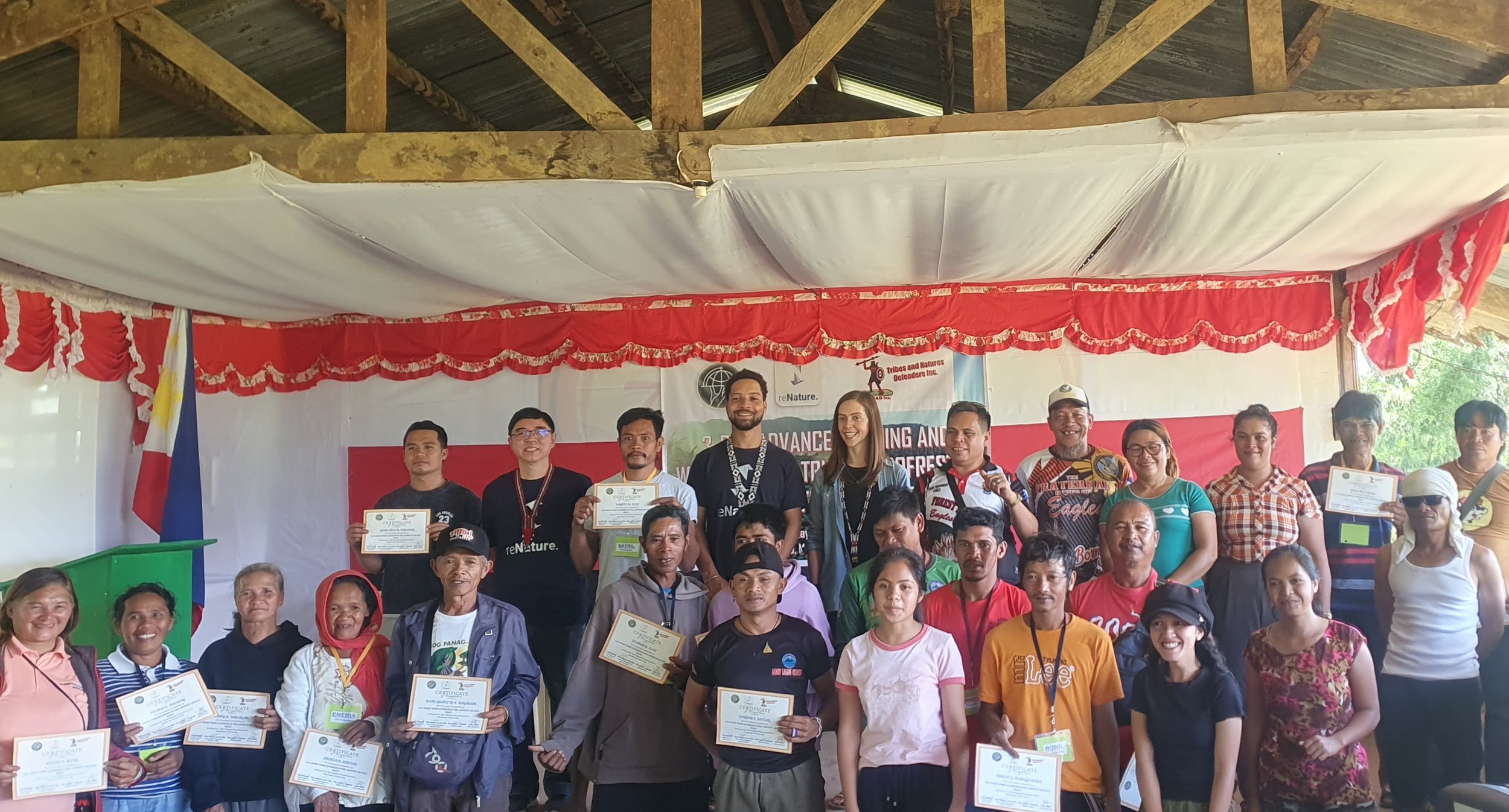Behind the brew: From crop to cup in Mindanao, Philippines
For many of us, a daily coffee is non-negotiable. We are spoilt for choice – instant, drip, long, short, with or without milk; which type of milk…want syrup? We’ve got you covered.
But how much do you know about what (and who) it takes to get those beans from crop to cup?
Black Gold
The most widely traded commodity after oil, coffee has earned the title of ‘black gold’.
Growing the stuff undoubtedly presents a profit-making opportunity, but farmers face market volatility, environmental concerns, and unequal income distribution across the value chain. Is it possible to produce it in a way that creates economic, planetary, and community value?
In November last year, ZFPA launched its first agroforestry coffee project in partnership with reNature in Mindanao, Philippines, known as the country’s food basket. Courtesy of the pledges raised by Hyatt Hotels Hong Kong, the project will establish a replicable model that integrates regenerative principles to enhance farms' climate change resilience, biodiversity impact, and carbon uptake. The project will provide learning opportunities to improve productivity, strengthen livelihoods, and foster social empowerment for indigenous communities and future generations.
With the design and implementation plans finalised and the farmer survey complete, we took the opportunity before the rainy season began to visit the community, joined by reNature’s Geert Magone van der Meer, Senior Consultant, our on-the-ground local consultant, Arthur Baria, where we were hosted by Datu from Tribes and Nature Defenders Inc.
A four-hour drive from Valencia, beyond the carpet of pineapple fields owned by food giants Dole and Del Monte, we reached our destination – Mount Nebo. Aptly, the local school was to serve as our base for the three-day education and engagement workshop.
Day 1 | The big meet and greet
The focus for day one was to establish trust amongst the key stakeholders, share expectations, and catalyse engagement with the project.
The tribes’ hospitality was second to none as we were plied with piping hot, fresh coffee (what else!) and sweet potatoes from their fields while enjoying a traditional dance performed by six of the tribe’s youngest members.
The impressive turnout from the community was a testament to its commitment to project success, with messages of support delivered by the Barangay (local administrative and electoral district) Councillor and Captain, a military Sergeant involved in protecting the land from illegal logging, and half a dozen Datus (tribal leaders). Preservation of the indigenous community, knowledge, and land for the next generation were key themes, and, despite most speakers sharing in Visaya, the words ‘Mother Earth’ were a motif throughout, highlighting their stewardship of nature.
Day 2 | Back to school
On the morning of the second day, Arthur led us through a ‘Coffee 101’ open dialogue classroom session, covering everything from the humble history of the bean to its rise as a valuable global commodity and the fundamentals of producing healthy crops.
Improving farmer livelihoods and delivering tangible financial results are key project objectives, and Arthur opened proceedings with a compelling value proposition. Local coffee production stands at 30,000 metric tons, accounting for only 15% of the 200,000 metric tons consumed nationally. This vast shortfall, combined with its low-maintenance nature and suitability to the local climate, makes coffee a highly promising investment.
Emphasised on day one by the community leaders, protecting the ecosystem for future generations is paramount, and the design and operation of the model farms must lay the foundations for a resilient green economy. Alongside detailed coffee management practices, Arthur guided the farmers through the principles of agroforestry and intercropping to boost biodiversity, improve soil health, and provide additional income.
The interactive format worked well to foster two-way communication and collaborative learning, encouraging participants to share their knowledge and perspectives, with farmers explaining their rationale for choosing Robusta over Arabica (as the name suggests, a hardier, more versatile variety) and their ideas for a source of organic fertilisers (think bats! 💩 ).
Once school was out, we headed to the first model farm to check out their progress, with half a hectare of coffee already planted, along with various fruit trees, including bananas and other native species.
Day 3 | Ceremony and celebration
Over more coffee and sweet potato, we conducted a debrief of the training with Datu and aligned on the next steps, which included soil sampling and a proposed composting workshop. With the technical elements of the trip wrapped up, the tribes had planned quite the send-off for their visitors.
The Shaman, guardian between the natural and spiritual world, carefully prepared tokens and blessings to mark the end of the 3-day programme, and we were honoured to be presented with necklaces that symbolised our partnership with the community. Each participant was awarded a certification of recognition for their engagement and commitment to the training.
Decorated with our new garlands, we were invited to join a traditional Filipino ‘Boodle Fight’, a communal feast where food is piled on banana leaves and eaten by hand, derived from a military custom symbolising equality.
Closing the trip with these local traditions profoundly reminded us how integral culture and ceremony are here, and that a truly successful project aligns with its unique ecological, economic, and social environment.
Projects like this are made possible by collective action. This is the second project to be funded exclusively by Hyatt Hotels in Hong Kong, underscoring the vital role of the hospitality sector in driving collective regeneration.
















